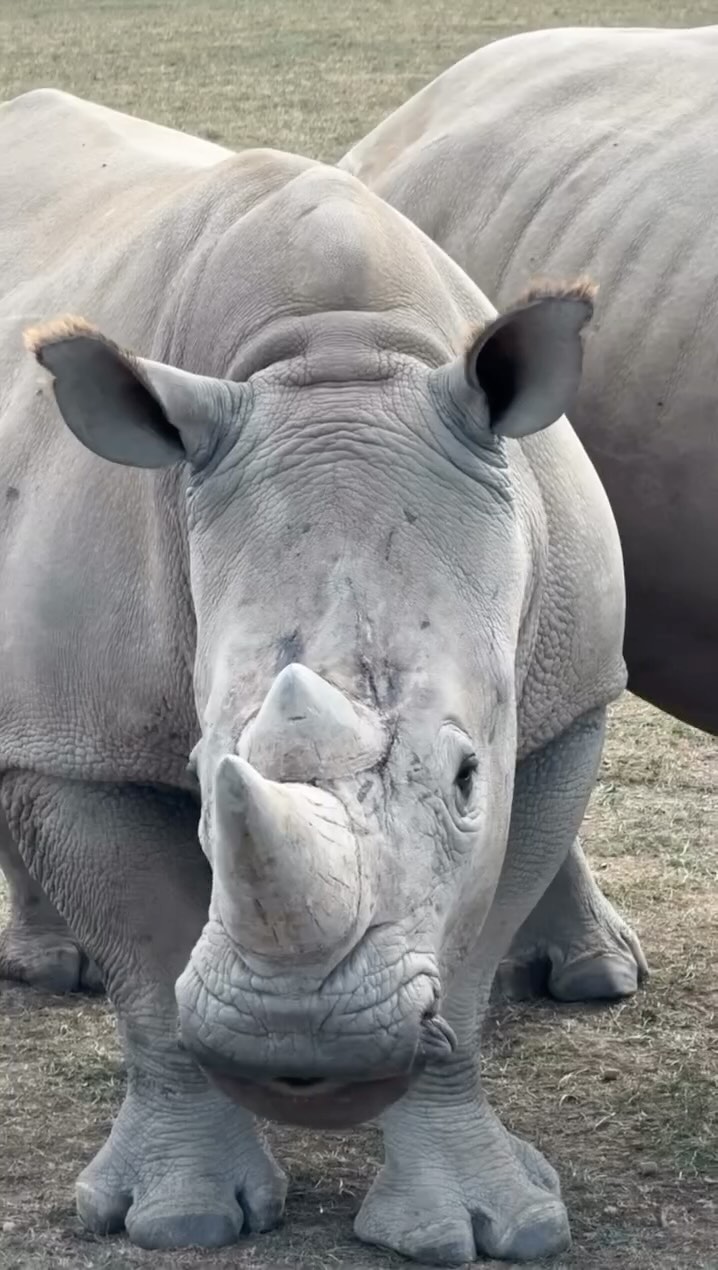- Understanding the ecological and conservation significance of southern white rhinos.
- Insights into the zoo management practices at The Wilds.
- Challenges and achievements in breeding and maintaining a large rhino herd.
- The southern white rhino’s status and efforts in wildlife conservation.
- The role of education and public awareness in conserving near-threatened species.
Southern white rhinos represent a shining example of conservation success and a reflection of ongoing challenges in wildlife preservation. As near-threatened species, they offer both a symbol of hope and a call for continued vigilance. At The Wilds, home to one of the largest herds in the Association of Zoos & Aquariums network, their story unfolds vividly for those fortunate enough to visit.
Ecological and Conservation Significance
Southern white rhinos are integral to the ecosystems they inhabit. Grazing by these formidable creatures helps maintain the grassland environment, promoting biodiversity. They consume large amounts of grass, influencing vegetation structure and carbon cycling within their landscapes. Their presence supports numerous other species, showcasing the complex tapestry of African savannas.
Conservation efforts for rhinos have faced significant hurdles, yet strides have been made. In the 19th and 20th centuries, southern white rhinos teetered on the brink of extinction, with numbers plummeting to just a few dozen individuals. Strategic conservation measures led to their populations rebounding to around 18,000 today. However, the threat of poaching remains ever-present, driven by the high market demand for rhino horn in traditional medicine and ornamentation.
Zoo Management Practices at The Wilds
At The Wilds, managing a large herd of rhinos involves a blend of science, dedication, and innovation. Housing and caring for 17 white rhinos requires meticulously tailored habitats that simulate their natural environment. This involves large, open spaces that enable natural behaviors and social dynamics critical for a species known for its complex social structures.
Nutrition and veterinary care form crucial pillars of zoo management operations. Ensuring rhinos receive an adequate diet rich in necessary nutrients mirrors their grazing lifestyle in the wild. Routine health check-ups and preventative care strategies are implemented to identify and address health issues promptly.
Collaborative Efforts in Breeding Programs
Breeding southern white rhinos in captivity comes with its set of challenges. Yet, the rewards contribute immensely to conservation goals. At The Wilds, understanding reproductive biology and behavior informs breeding programs. Constant monitoring of individual animals helps assess reproductive readiness and identify suitable breeding pairs, fostering genetic diversity and population health.
Research initiatives have expanded knowledge about fertility and breeding techniques, contributing to improved success rates in captive breeding. The synchronization of reproductive cycles and the use of artificial insemination are some advanced methods employed to enhance breeding outcomes.
Rhino Conservation Status
Though reclassified from endangered to near-threatened, southern white rhinos aren’t safe. Conservation organizations continue to fight against poaching and habitat destruction. Innovative measures, such as genetic analysis and rhino rehabilitation centers, bolster conservation strategies. Ensuring habitat protection and supporting anti-poaching initiatives remains paramount.
International collaboration is critical. Partnerships among conservationists, governments, and local communities strengthen efforts to safeguard these magnificent animals. The Wilds and other facilities within the zoological community serve as vital reserves, offering a safe breeding environment and increasing global awareness.
Education and Public Awareness
Educating the public on the plight of the southern white rhino is imperative for long-term conservation success. Awareness marries science and public action, highlighting the importance of preservation. Visitors to The Wilds gain insight into the species through engaging programs that foster appreciation and understanding.
Developing robust educational initiatives encourages visitors to become advocates for wildlife. Guided tours, interactive exhibits, and informative trails emphasize the conservation narrative, driving home the necessity of protecting these natural treasures for future generations.
Incorporating a blend of interactive experiences and factual education transforms casual visits into meaningful engagements. The connection formed by witnessing these gentle giants leaves an indelible mark, emphasizing the significance of conservation efforts.
Southern white rhinos, with their majestic presence and ecological role, are more than just a wonder to observe. They represent a crucial testament to the successes and trials of wildlife conservation. The efforts at The Wilds exemplify a commitment to preserving this species, offering a glimpse into the world where coexistence and conservation triumph. Each visit becomes a chance to appreciate and support the intricate balance needed to protect these historical beings.
*****
Source Description
Here at The Wilds, we’re home to one of the largest southern white rhino herds in the @zoos_aquariums zoological community with 17 white rhinos.
As near threatened species, these rhinos are rare to see and will leave you speechless on your visit to The Wilds. Here’s a video to take in just a glimpse of how fascinating they are. 💚🦏


